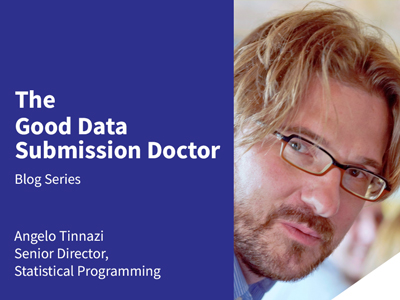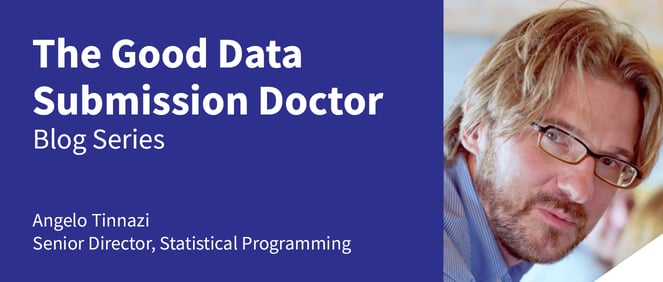In a Virtual Room with the FDA Reviewers


I had recently (for the first time) the pleasure and honor to attend a virtual meeting with the FDA, a pre-NDA Type-B meeting (1). In the agenda, under the list of attendees, I was listed as a “Data Standards Expert” (what an exaggeration! *winks*).
Although, I often contributed to the preparation of the discussion (2), I never had the thrilling experience to meet the FDA as a Statistical Programmer. Finally, as a Senior Director for Statistical Programming at Cytel, I got this much-awaited opportunity.
Due to the pandemic, with this particular FDA division, the meeting was held virtually and our client proposed to extend the list of participants. In addition to the traditional “profiles” (regulatory, safety, medical officer, chemistry, manufacturing, pharmacology, etc.), I along with my Cytel colleagues from the Biostats and Strategic Consulting teams, attended the meeting.
The preparation of this meeting is generally very meticulous. In fact, prior to the final submission of the entire eCTD package, the sponsor must call for a meeting. In this case, a pre-NDA type-B meeting, where they provide some preliminary documentation to seek the agency’s agreement on the submission strategy. In this phase, it is key for the sponsor to frame the right questions with proper format or wording. For us, it lasted several weeks (and meetings) and in the end the preliminary documentation was sent to the agency ’30 days’ prior to the meeting with the agency, as stipulated.
The agency’s answers to our questions came just a few days prior to the meeting with them. Most of these answers confirmed the sponsor’s strategy and therefore, were removed from the agenda. The other questions included either additional requests or clarifications from the Agency. Hence, the sponsor had additional internal meetings to prepare for the discussion on those specific questions.
Finally, the day of the meeting arrived. It was an extremely formal affair and lasted a little over an hour. The meeting was conducted over a call with no sharing of slides or documents. At the beginning, the appointed FDA Project Manager offered some instructions on how the meeting was going to be conducted. There was a simple rule: “whenever you have to speak, please state your name and role.”
In the end, I must admit that my contribution was minimal. In fact, all items related to data submission, and anticipated in the Study Data Standardization Plan (3)(4) and included in the Sponsor “Type B (Pre-NDA) Meeting Package” were already acknowledged by the FDA in their “Preliminary Comments”.
Together with the Study Data Standardization Plan, a key (affirmative) question was asked to the FDA:
Does the Agency agree with the data submission plan as described in the Study Data Standardization Plan?
The FDA agreed with our plan but they wanted to ensure that together with datasets, they were also going to receive “..the software programs used to create the ADaM datasets and the software programs used to generate tables and figures associated with the primary and secondary efficacy analyses for key pivotal studies”.
Naturally, our ADaM packages will contain those programs (5) as per the FDA Study Data Technical Conformance Guide (6), but we did omit mentioning this detail in the Study Data Standardization Plan. The lesson here is that the next time, we will specify it regardless of how “obvious” it may feel. Nothing is obvious when you have to submit your data packages to the agency.
Good luck to our Sponsor for the upcoming submission! I am sure this will be a great new treatment that will be beneficial for many patients, and at Cytel we are proud of our contribution towards it.
The Project Based Service group at Cytel supports about 5 submissions (and growing) such as, NDA (New Drug Application), per year.
References
1. “SOPP 8101.1: Regulatory Meetings with Sponsors and Applicants for Drugs and Biological Products”
2. “An FDA Submission Experience Using the CDISC Standards”, A. Tinazzi and C. Marchand, PHUSE 2017
3. “PHUSE Study Data Standardization Plan Template”
4. “From Before to After: Preparing and Concluding your FDA Data Submission”
5. “Submitting Software Programs to the Regulatory Agencies, what do we know about it?”
6. “FDA Study Data Technical Conformance Guide”
About Angelo Tinazzi
 Angelo Tinazzi is Senior Director, Statistical Programming, Clinical Data Standards and Clinical Data Submission at Cytel. He is a well- published and recognized expert in statistical programming with over 20 years' experience in clinical research. The application of CDISC standards in different therapeutic areas is part of his core expertise since 2003 in particular in the context of data submission to health authorities such as the FDA and PMDA.
Angelo Tinazzi is Senior Director, Statistical Programming, Clinical Data Standards and Clinical Data Submission at Cytel. He is a well- published and recognized expert in statistical programming with over 20 years' experience in clinical research. The application of CDISC standards in different therapeutic areas is part of his core expertise since 2003 in particular in the context of data submission to health authorities such as the FDA and PMDA.
Angelo is an authorized CDISC instructor and member of the CDISC ADaM Team as well as the CDISC European Committee where he also manages the Italian-speaking CDISC User Network.

